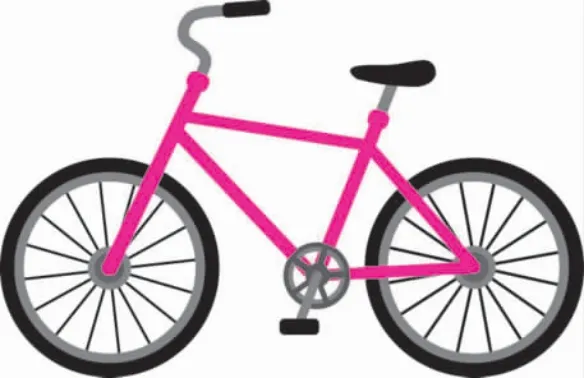陕西 吕 品
柴林是一名自行车收藏家,但很少有人知道数十年来他走在收藏自行车这条路上的艰辛。

Chai Lin's passion for bicycles dates back to the 1960s when he saw some people riding the twowheeled vehicle in his home city. “They were like flying on the streets, and my heart went flying with them,” recalled Chai. Since then, he dreamed of owning a bike.
However, a bicycle was still too expensive for ordinary Chinese at that time. To get enough money sooner, Chai made use of his talent in calligraphy and painting—a skill he started to learn from 6 years old—by selling artworks on the street. Thanks to all the efforts, Chai got his first bike at the price of 880yuanin 1980.

After becoming a businessman years later and earning enough to buy fancy motorbikes and cars, Chai's passion for bikes, however, didn't dwindle at all. He began to collect bikes of various brands and ages, especially antiques, from around the world through auctions (拍卖) and other means.
Hard-won items have brought Chai satisfaction, but many people around him don't think so. Some friends say Chai bought nothing more than a pile of scrap metal(废金属), while others think he was blowing money on nonsense. But he was never influenced by those comments. In his eyes, the bikes he collected are also showcasing the development of global industrial civilization.
With his collection growing, there was no space big enough to keep it. In 2009, with the support of the Gansu provincial government, he invested 200 millionyuanfor a museum just for his bikes.After 10 years' efforts, the Gansu Sanmu Bicycle Museum, located in Chengguan District of Lanzhou,finally opened to the public in January 2019 free of charge. With an area of 18,650 square meters, the museum stores not only bikes, some 200 years old, but also some 13,500 bike-related things like manuscripts (手稿), books and photos.
Chai has constantly upgraded the facilities inside the museum, equipping it with state-of-the-art technology. For example, a VR installation is available for visitors to experience the feeling of riding on different types of bikes. Due to limited space, a large part of Chai's collection is not yet exhibited and has to be stored in the warehouse, driving him to improve the museum.
Reading Check
1. Why did Chai sell his artworks on the street?
A. To support his family. B. To draw people's attention.
C. To buy a bicycle. D. To chase his painting dream.
2. What does the underlined word “dwindle” in paragraph 3 mean?
A. Decrease. B. Improve. C. Damage. D. Challenge.
3. What is others' main attitude to Chai's bicycle collection?
A. Interested. B. Pessimistic. C. Unclear. D. Supportive.
4. What can we know about the Gansu Sanmu Bicycle Museum?
A. It has a history of 200 years.
B. It opened to the public free of charge in 1980.
C. It was built with investment from the government.
D. It stores bicycles and other things related to bicycles.
Language Study
with的复合结构
with的复合结构在句中表状态或说明背景情况,常作伴随、方式、原因、条件等状语。 具体结构如下:
1. with+宾语+名词
He died with his daughter yet a schoolgirl. 他去世时,他的女儿还是个学生。
2. with+名词+介词短语
She said goodbye with tears in her eyes. 她含着眼泪说再见。
3. with+名词+形容词(强调名词的特性或状态)
He often sleeps with the windows open. 他常开着窗睡觉。
4. with+名词+副词
He stood before his teacher with his head down. 他低着头站在老师面前。
5. with+名词+V-ed(强调名词是动作的承受者或动作已经发生)
He sat there with his eyes closed. 他闭着眼睛坐在那儿。
6. with+名词+V-ing(强调名词是动作的发出者或动作正在进行)
He fell asleep with the lamp burning. 他没熄灯就睡着了。
7. with+名词+to do(不定式表示动作尚未发生)
I can't go out with all these clothes to wash. 还有这些衣服要洗,我无法出去了。



